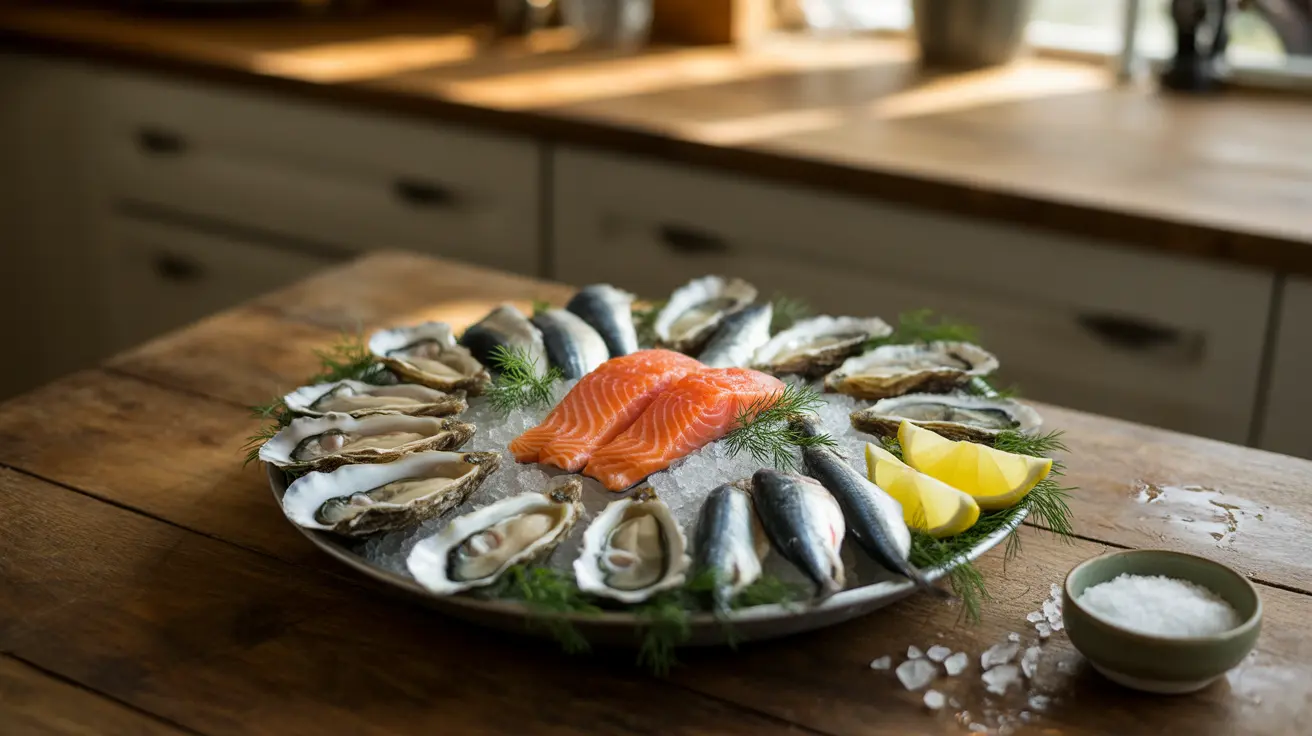Seafood has long been celebrated as a nutritional powerhouse, offering a unique combination of essential nutrients that can significantly impact our overall health. From heart-healthy omega-3 fatty acids to high-quality protein, seafood presents a compelling case for inclusion in a balanced diet. But is seafood healthy for everyone, and what should you know before making it a regular part of your meals?
The Proven Health Benefits of Seafood
Research consistently shows that regular seafood consumption can provide numerous health advantages. The rich nutrient profile of fish and shellfish includes high-quality protein, vitamin D, selenium, and essential omega-3 fatty acids EPA and DHA, which are crucial for brain and heart health.
Heart Health Benefits
Regular seafood consumption has been linked to reduced risk of cardiovascular disease. The omega-3 fatty acids found in fatty fish help reduce inflammation, lower blood pressure, and decrease the risk of irregular heartbeats. The American Heart Association recommends eating fish at least twice per week for optimal heart health.
Brain and Cognitive Function
The DHA found in seafood plays a vital role in brain development and function. Studies suggest that regular seafood consumption may help protect against cognitive decline, reduce the risk of depression, and support better memory function as we age.
Best Types of Seafood for Optimal Health
Some seafood varieties offer more significant health benefits than others. Here are the top choices for maximizing nutritional value:
- Salmon (wild-caught): High in omega-3s and vitamin D
- Sardines: Rich in calcium and omega-3s
- Mackerel: Excellent source of B vitamins and protein
- Oysters: High in zinc and vitamin B12
- Tuna: Protein-rich with moderate omega-3 content
Understanding and Minimizing Health Risks
While seafood offers numerous benefits, there are some considerations to keep in mind. Mercury content varies among different species, and certain populations should be more cautious about their seafood choices.
Managing Mercury Exposure
To minimize mercury exposure while maintaining the health benefits of seafood, consider these guidelines:
- Choose lower-mercury options like salmon, sardines, and trout
- Limit high-mercury fish such as shark, swordfish, and king mackerel
- Follow local fish advisories for locally caught fish
- Pregnant women and young children should be particularly careful about their seafood choices
Healthy Preparation Methods
The way you prepare seafood can significantly impact its nutritional value. The healthiest cooking methods include:
- Grilling
- Baking
- Steaming
- Poaching
- Broiling
Avoid deep frying or using excessive butter and cream sauces, which can add unnecessary calories and unhealthy fats.
Seafood vs. Other Protein Sources
Compared to other protein sources, seafood often provides more health benefits. While lean meats like chicken are healthy choices, seafood typically offers higher levels of omega-3s and other essential nutrients. Red meat, while rich in iron, generally contains more saturated fat than seafood.
Frequently Asked Questions
Is seafood healthy for me, and what specific health benefits can I expect from including it in my diet? Yes, seafood is healthy for most people and offers benefits including improved heart health, better brain function, reduced inflammation, and high-quality protein. Regular consumption can help protect against various chronic diseases and support overall wellness.
Which types of seafood are best for providing omega-3 fatty acids and how much should I eat each week for heart and brain health? Fatty fish like salmon, mackerel, sardines, and herring provide the highest levels of omega-3s. Aim for 2-3 servings (4-6 ounces each) per week for optimal health benefits.
Are there health risks or downsides to eating seafood, such as mercury exposure, and how can I minimize these risks? The main risk is mercury exposure, which can be minimized by choosing lower-mercury fish, avoiding high-mercury species, and following consumption guidelines for your demographic group. Pregnant women and young children should be especially careful about their choices.
What is the healthiest way to prepare and cook seafood to avoid losing nutrients or increasing disease risk? The healthiest preparation methods include grilling, baking, steaming, and poaching. Avoid deep frying and heavy sauces. Cook fish until it flakes easily but avoid overcooking to preserve nutrients.
How does seafood compare to other protein sources like chicken or beef in terms of nutrition and overall health impact? Seafood generally offers more health benefits than other protein sources, particularly due to its omega-3 content and lower saturated fat levels. While chicken and lean beef can be part of a healthy diet, seafood provides unique nutritional advantages, especially for heart and brain health.




